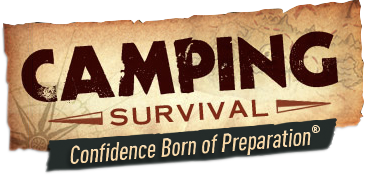
The Survivalist’s Guide to Not Getting Lost
Here’s a maxim of wilderness survival to live by: never take your safety for granted. Conditions can turn, circumstances can change, and before you know it even an experienced hiker can lose his way on a trek.
Below are some tips for avoiding disaster and some advice on what to do if you get lost.
1. Pay Attention
Keep an eye on your map. Losing focus on your location can lead to disaster and paying attention to the landscape and the map will prevent it. Simple as that.
2. Close at Hand
Part of paying attention to your map is actually having it (and your compass) in your hands or within easy reaching distance. It will do you little good in your car or at the bottom of your backpack. Also make sure you have a rescue whistle somewhere in your pack.

3. Know Your Route
Plan out a route that you know you and your party can traverse and do not deviate from it. Once you have that down, make sure someone back at camp or at home knows where you are going. If possible, give them a copy of your map.
4. Baby Steps
Make sure everyone in your party is trained on the basics of compass usage and wilderness navigation. If a fellow traveler is a greenhorn survivalist and never used a compass or map, it’s best to start small and have them take easier hikes until their skills improve—at which point you can step up the difficulty.
5. Patience
Do not rush yourself, especially if you are in danger of becoming lost. Take the time you need to become acquainted with your surroundings. Take to higher ground to make sure you are where you should be, and if necessary, backtrack to a place you know is on the map. Take the time you need to reevaluate your surroundings and get your bearings.
If you are not sure after all of that and it is getting dark, then set up camp or just pitch a hammock for a while and sleep on it.

6. Landmarks & Time Checks
When you plan your trip, make sure you have marked what time you should be in a certain place; that way you can be sure you are where you are supposed to be. Making time checks at certain landmarks will keep you on track.
7. Pace
Knowing your pace at certain places will determine how fast you have moved and will give you a general account of how far you have gone. Keeping a steady pace as you go will let you know that your hike is progressing as it should. In addition, knowing what slows you down and speeds you up will assist you in mapping out your next hike. And depending on your pace, make sure to pack enough water in a bottle or bota bag.
8. Magnetic Declination
Magnetic Declination (or magnetic variation) is the angular difference between true north (i.e. the north that is marked on your map) and magnetic north (i.e. the north that is shown on your compass). Understand the difference and why it is important before you hike.
9. Path of Least Resistance
When faced with alternative path on your hike, taking the one that provides the least resistance is most likely your best option. Make sure you note anything blocking your path or making your hike more difficult so you can prepare to avoid it next time.
10. Objectivity
When you do make a wrong turn, look at the situation objectively and do not become overly anxious about it. The key is to fix the error as quickly as you can and avoid making the same mistake again.

What if you get lost?
Five points to remember if you lose your bearings and are not sure of your location:
- Stay Calm
- Stay Put
- Formulating a Plan
- If you have a map, ascertain your position. Think about the last time you were 100% certain of your location. Quite often becoming “un-lost” is simply a matter of retracing your steps.
- If you do not have a map (what are you doing without a map?!), make an educated guess. Think about the terrain you have covered, the approximate pace at which you have been walking, and any landmarks you may have seen since your last “known” location.
- Climb to a High Point
- Nature’s Indicators
What happens if you fall in a creek and lose your compass? What if your GPS battery dies? How do you find your way back to civilization? Here are some tips:
- Sun – Two ways of using the sun to discern direction are the Shadow Compass and Analogue Watch methods:
- Shadow Compass: Place a stick in the ground. Mark the location of the tip of the shadow. Wait 30 minutes, then mark the new location of the shadow tip. Draw a line between the two marks. This line runs approximately in an east-west direction.
- Your Watch: Hold your hand with the watch on it out and face the 12:00 towards the sun. Imagine a line that intersects the halfway point between the hour and 12:00, that line is pointing south.
-
Wind –
If you know the general direction of prevailing winds in the area in which you are hiking, then grass, plants, and trees will be leaning in that direction.
-
Confirmation – Natural methods are not infallible. Always look for more than one indicator when ascertaining a direction. If the sun, plants, and wind all indicate the same thing, then chances are they cannot all be wrong!

Laureli Latimer
All this is smart and good info thanks for posting